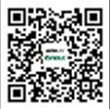Wearable Devices
When powering wearable devices, size, performance and safety are the most critical aspects of any specification. Portable device manufacturers worldwide look to ABLE (an Ultralife company) when designing new battery powered wearable technologies. ABLE manufactures non-rechargeable cells for wearables used in applications as diverse as healthcare (example, remote patient monitoring), industrial (example, security cards), professional athletics (example, performance optimization) and fashion (example, smart jewelry).
Wearable battery development and manufacturing
Most wearable devices require batteries as their main power source so, if the battery is not high quality or reliable, it could result in gaps in the data or render the device unuseable. This is where speaking to a battery manufacturer like ABLE can be invaluable.
The process to selecting the optimum battery starts with choosing the best-suited chemistry (see below information on Coin Cells vs. Ultralife Thin Cells®). ABLE utilize the latest Lithium Manganese Dioxide technology to maximize energy density, allowing devices to be made smaller and lighter, a vital consideration for an application that needs to be worn around the neck or arm. Once the chemistry has been chosen, our team of in-house mechanical and electrical engineers design a range of cells to give customers a choice of size and performance characteristics (such as capacity, discharge current and pulse capability).
Once this is completed, the wearable device cells undergo rigorous testing and evaluation and meet performance, safety and transportation standards, including IEC and UL.
Advantages of Ultralife Thin Cells® over Coin Cells
Many wearable device manufacturers utilize coin cells in their designs but Ultralife Thin Cells® boast the following advantages:
Ø Although both coin cells and Ultralife Thin Cells® share the same Lithium Manganese Technology, Ultralife Thin Cells® have a higher running voltage during discharge, meaning less current consumption in today’s constant power driven applications
Ø Ultralife Thin Cells® offer continuous discharge currents 10 times that of coin cells of the same capacity (ideal for higher or pulsed loads)
Ø Coin cells suffer from a falloff in performance at low temperatures whereas the low internal resistance construction of the Ultralife Thin Cells® mean they can provide twice the capacity of the best performing coin cells at -10°C
Ø Ultralife Thin Cells® can be permanently integrated and live out the life of the product with no need for user intervention
Ø Coin cells are manufactured in a small number of standard sizes but Ultralife Thin Cells® can be custom designed to meet customer requirements
To find out more about Ultralife Thin Cells, please




